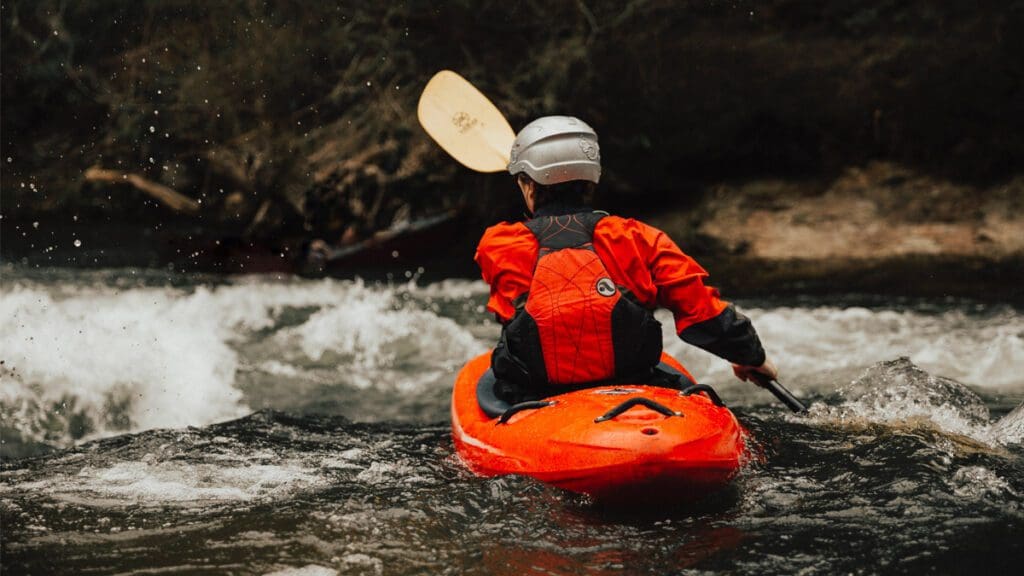So, you are looking to get into big water kayaking? Doing so might seem quite intimidating at first, and many people tend to avoid big waters for that reason – large waves, massive curlers, and on top of that, giant holes. While yes, you are going to encounter these, you should know that while it takes a bit for you to get used to it, big water kayaking is exponentially more fun than the tamer versions!
That being said, to ease the initial intimidating factor, in this article, we are going to talk about some tips and tricks that are going to help you enjoy this exhilarating activity as much as you possibly can.
Eskimo Rolls Are an Essential Skill to Have
The first thing that we need to talk about in this article are Eskimo rolls, and this is because they play an essential role in ensuring that you’ll stay safe. Basically, when kayaking in big waters, if you happen to turn over, swimming to the shore isn’t always going to cut it. The probability is high that your ability to get to the shore is going to be obstructed by curlers and rapids, hence meaning that in these scenarios, you want to know how to roll over.
The best way to start with Eskimo rolls is, of course, to do so on still water. The expert reviews and tips on kayaks and equipment explain how different models can make rolling over way easier. This is why equipment plays a big role in safety, especially when we’re talking about specific, more dangerous waters. All of that being said, make sure that you practice this maneuver!
Don’t Fight the Flow
It doesn’t matter how strong you are, fighting the flow is only going to make things harder rather than easier, so when you are in a current that is obviously tough to navigate through, the best thing that you should do is to just embrace the flow. Try and navigate with what you’re given, instead of fighting it, glide through the current and use it to your advantage. Of course, finessing through such circumstances does require practice – but the moral of the story is to work with the flow.
No Sneaking!
One of the most common mistakes that beginners in big water kayaking tend to make is trying to almost sneak around the river, trying to stroll near the shore. While this might seem like a safer option, counterintuitively, it really isn’t. In fact, whirlpools and curlers, which are probably going to push you into places where you don’t want to go, can most likely be found around the shore, as well as all the stickiest holes.
That being said, staying in the main flow gives you way more control and options in general. So, don’t stray away from the main flow, the entire experience is going to be way more enjoyable there than near the shore.
Patience Is the Key
So far, we have pretty much covered how fear impacts your decisions regarding the main flow and similar, but let’s talk about the other side of the spectrum when it comes to people that are just getting into big water kayaking. If you are a person that isn’t afraid at all and are looking for as exhilarating an experience as possible, you are surely going to find it – but you need to be patient. Rushing in can only result in some unsafe scenarios.
Avoid rushing to paddle to a certain direction way too early. For instance, if you are trying to avoid a hole and try passing it on the right too early, the probability is high that you end up with some other unpredictable problems like eddylines, which are one of the toughest features in big water kayaking. Not only are they immensely powerful, but they are also unpredictable, so make sure not to rush into anything before close inspection first.
Don’t Go Alone
Last but not the least, it’s important to mention that being alone in big waters is a no go. Basically, there are way more safety hazards, and you want someone to be there to help you, in case you need it, be it to retrieve some lost equipment or if it just so happens that you fall out of the kayak and your only option is to swim. In such cases, you are surely going to appreciate that you have someone there to help you out.In the end, all it takes is some proper research and then some practice to put that knowledge to good use. After a while, you will surely get the hand of all the basics, and you are going to enjoy everything that this wonderful activity has to offer!
